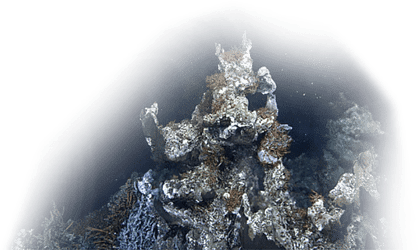This three-week expedition aims to discover, explore, and monitor deep-sea ecosystems within several existing and proposed Marine Protected Areas (MPAs) while sharing the joy of discovery of the incredible life and wonders hidden far below the waves. Owing to the region’s uniquely small, active, and nearshore tectonic plates, there is an incredible concentration of seamounts, hydrothermal vents, and cold seeps that are globally rare biodiversity hotspots. While the main goal is conservation through protection and recovery, the expedition partners recognize the importance of their research in ensuring healthy oceans for all. The science co-created by Fisheries and Oceans Canada, the Council of the Haida Nation, Nuu-chah-nulth Tribal Council, and Ocean Networks Canada will contribute to a better understanding of these remarkable and fragile ecosystems.
Check out three seaside chat sessions from the expedition (above). Meet the science crew and Haida knowledge holders, take a virtual tour of the equipment on board, and hear about ocean discoveries plus answers to viewers’ questions.
The collaborative partnership--solidified through previous joint-expeditions--enables the team to share resources, knowledge, and expertise to develop a genuine ecosystem-based research plan. The team will survey ecosystem components from the surface to the seafloor. The main objectives of the expedition are:
1. Mapping and naming uncharted areas;
2. Exploring life on newly discovered seamounts;
3. Collecting the first benthic ecological time-series data on previously visited MPA seamounts;
4. Searching for cold seeps and their chemosynthetic communities;
5. Confirming the existence, activity, and community type of a little-known hydrothermal vent field;
6. Documenting the oceanography around all three deep-sea ecosystems;
7. Documenting marine mammals, seabirds, and other transient species; and
8. Science outreach, communication, and community engagement.
